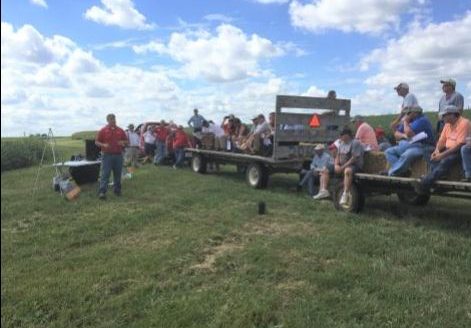Iowa’s farmland values rose again, albeit at a slower pace than the last two years. The annual Iowa State University Land Value Survey found that farmland values increased 3.7% or $424, to $11,835 per acre. The modest increase this year follows a 17% increase in 2022 and a near-record 29% increase in 2021. The nominal value of an acre of farmland is again higher this year than at any point since Iowa State began surveying values in 1941. When adjusting for inflation, the 2023 average value surpasses 2022’s inflation-adjusted values by 0.5%.
Rabail Chandio, an assistant professor and extension economist at Iowa State, said many of the factors behind the large surge in values last year supported the increase this year as well.
“Interest rates were lower through the first half of the year, commodity prices were still elevated, crop yields were a positive surprise despite the weather challenges throughout the growing season, cash and credit availability remained ample and allowed farmers to stay aggressive in the land market, and investor demand grew stronger nudged by inflation concerns and lack of alternative investment options,” she said.
The Federal Reserve has used interest rate hikes to help curb inflation rates that ballooned from mid-2021 through 2022; however, Chandio said that the pace of those hikes has been tempered.
“The goal is to control inflation without triggering a recession, a strategy that has proven successful in 2023, and we hope to see maintained stability through 2024,” said Chandio, who manages the survey.
She also noted that since the economy has not reached the 2% inflation target, she anticipates future interest rate increases.
Future rate increases will continue to slow the growth in farmland values, but not immediately.
“It takes a couple of years for interest rates to be reflected in farmland values,” Chandio said. “The impact of the aggressive interest rate hikes of 2022 is expected to be felt more strongly in 2024 and beyond, resulting in much more modest growth or even decreases in land values in the coming years.”
Commodity prices were a commonly cited positive influence on this year’s farmland values. Chandio said they were elevated earlier in the year due to weather and geopolitical uncertainties, but they have decreased as of the end of the year.
However, she said, “In terms of their influence on land values, they had a more positive impact on the land markets this year than a negative one.”
Chandio also noted farmers having ample cash reserves as an influence on land values this year. She attributed farmers’ recent accumulation of cash reserves to high net farm incomes.
“Although the farm income forecast for December 2023 anticipates a decrease from 2022 levels, U.S. net farm income in 2023 remains over 30% higher than the 2020 level and the 20-year average (2003–2022),” she said. “The combination of debt-free ownership of most land, substantial farm incomes, and limited land supply means that farmers still maintain significant cash reserves.”
After three years of increases, Chandio says that we are currently at a plateau in farmland values.
“While positive influences were more prominent at the beginning of the year, negative pressures are building as we approach 2024. Barring any unusual activity in the land markets, we may see the curve start to decline in the next year or so,” she said.
Chandio’s prediction tracks with the survey respondents’ near-term expectations—49% expect a decline in farmland values in one year, and only 30% expect an increase. Respondents were more optimistic about values five years out—a full 70% of respondents expect values to be higher in five years.




